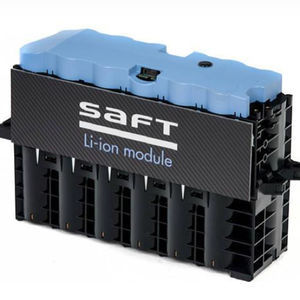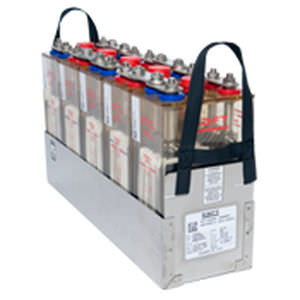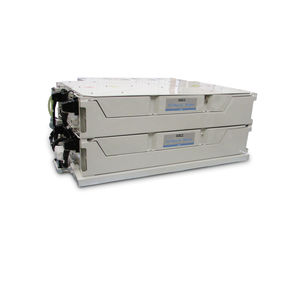
- Products
- Catalogs
- News & Trends
- Exhibitions
Ni-Cd battery MRX series for emergency lightingfor telecommunications equipmentsintered



Add to favorites
Compare this product
Characteristics
- Type
- Ni-Cd
- Applications
- for telecommunications equipment, for emergency lighting
- Other characteristics
- high-performance, high-power, sintered
- Load capacity
Max.: 520 Ah
Min.: 70 Ah
- Length / diameter
Max.: 384 mm
(15.1 in)Min.: 143 mm
(5.6 in)- Weight
Max.: 36 kg
(79.37 lb)Min.: 12 kg
(26.46 lb)
Description
MRX on-board compact, lightweight and adaptable batteries provide a reliable, always-available source of high energy and power to ensure: passenger safety (on-board signaling, security lighting, door control and communication networks); passenger comfort (ventilation, air-conditioning, lighting, Wi-Fi); and fail-safe train start-up (pantograph lift-up, computing, electronics).
Their high energy and power performance makes them ideal for the continuous, everyday use required for on-board backup on all types of modern electric trains including urban, regional and intercity transport.
Features & Benefits
Enables optimum use of limited space to achieve significant increases in passenger carrying capacity
Combines proven Ni-Cd reliability with sintered/PBE efficiency for a reliable backup under a broad range of tough conditions
Easy maintenance with integrated water filling system
Technical Specifications
Maximum performance reliability and low TCO
Low-maintenance with a 2-year interval between water top-up
Compact, lightweight block battery package for a major size and volume advantages (30% lighter than standard Ni-Cd batteries)
Does not suffer from “sudden death” which can affect lead acid batteries
Resistant to extreme temperatures of – 50°C to + 50°C
VIDEO
Catalogs
No catalogs are available for this product.
See all of SAFT‘s catalogsRelated Searches
- Battery charger
- 12 V battery
- Lithium battery
- IEC battery
- Rectangular battery
- UL battery
- Automatic battery charger
- High-performance battery
- Electric vehicle battery
- Lithium-ion battery
- ISO battery
- Mobile battery charger
- Circular battery
- 3 V battery
- Maintenance-free battery
- Battery for solar applications
- Nickel battery
- Industrial battery
- UPS battery
- Energy storage system
*Prices are pre-tax. They exclude delivery charges and customs duties and do not include additional charges for installation or activation options. Prices are indicative only and may vary by country, with changes to the cost of raw materials and exchange rates.














